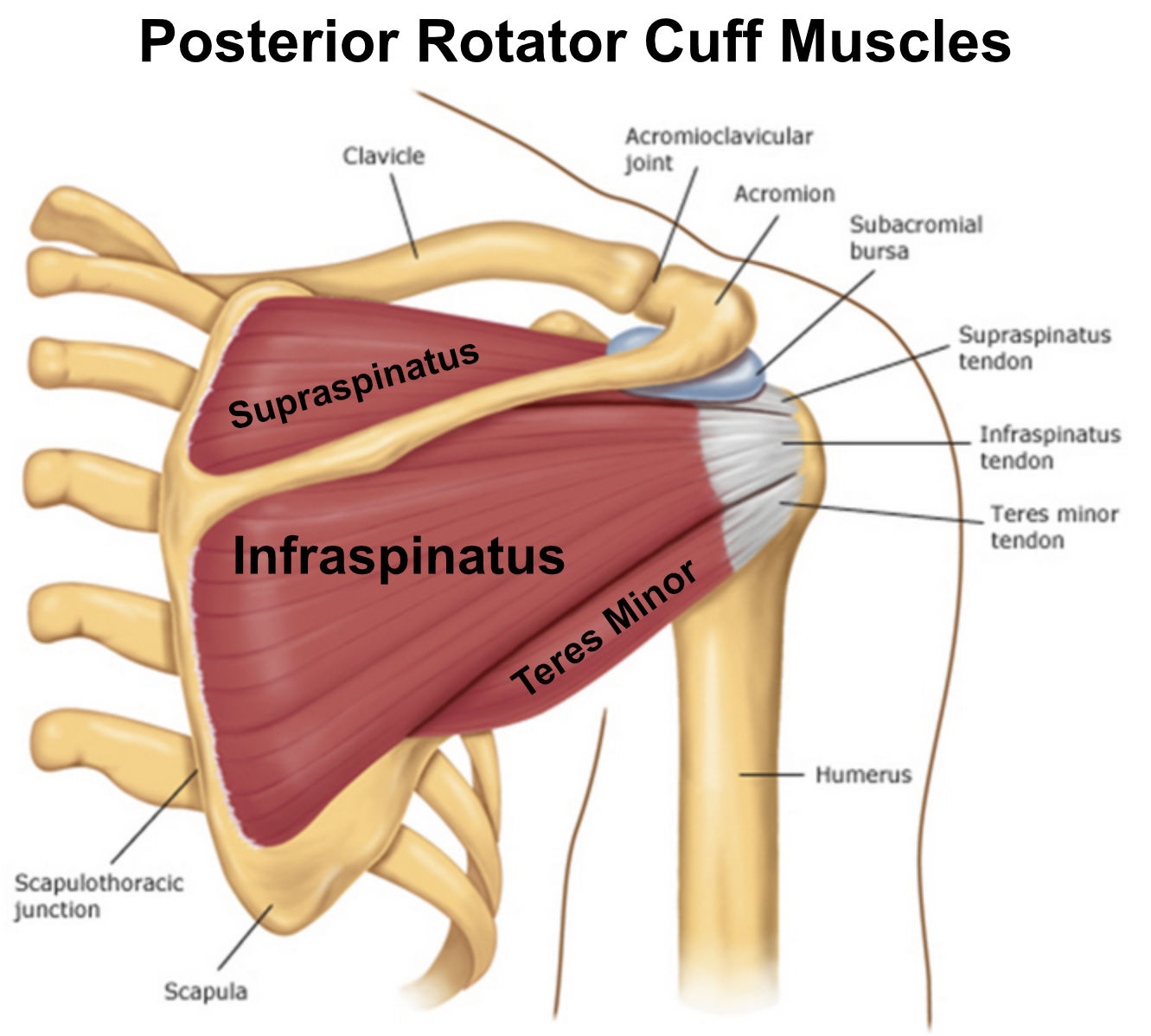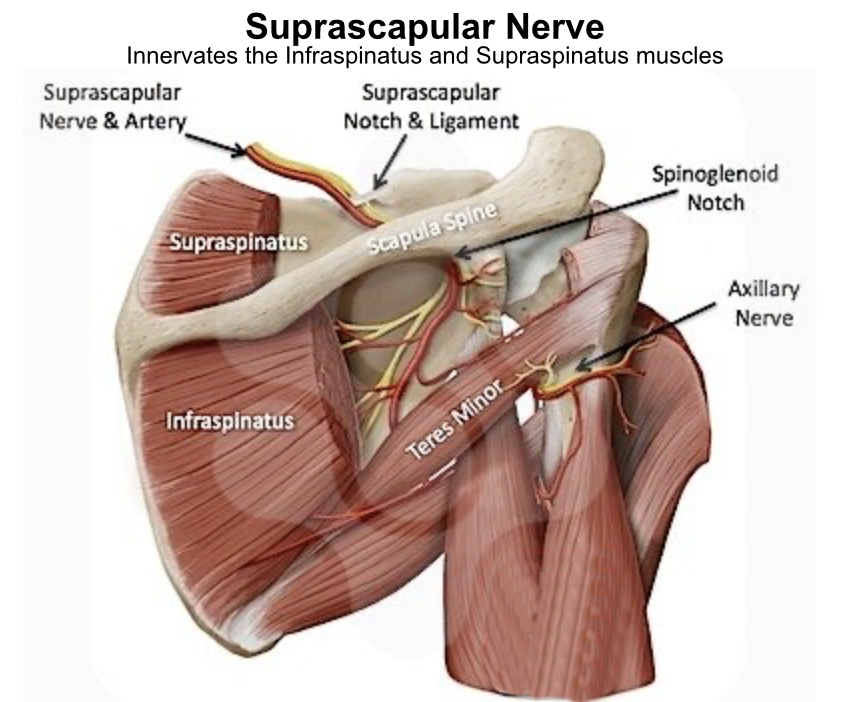The Infraspinatus muscle
The Infraspinatus muscle is one of the four rotator cuff muscles in the shoulder, and lies over the lower part of the scapula or shoulder blade. The muscle is active when we use our arms. Very interestingly, the infraspinatus muscle can be very active when we use our and hands and fingers – you can feel the muscle working and moving on palpation when you ask someone to move their fingers.
When the infraspinatus muscle is overused it doesn’t always impede shoulder movement, but can commonly contribute to developing trigger spots, tight tender spots, knots or spasm in the muscle, which cause referred pain or tingling, often down to the forearm and hand.
Infraspinatus syndrome is very common!
Probably because we over-use our hands considerably with excessive shoulder tension. This will inevitably cause the infraspinatus muscle to be constantly overactive and strained, leading to lack of oxygen in the muscle and causing the trigger spots to develop. It is then often confused with cervical radiculopathy or Thoracic Outlet Syndrome, all of which can be involved with neck and arm pain.

Common Causes of Infraspinatus Syndrome
- Repetitive movements of the shoulders, arms and hands
- Tension when typing, writing and texting
- Habitual tension in the shoulders
- Excessive shoulder movements or strains
- Injuries to the Shoulder
- Habitually pulling the shoulders back or over-stretching of the shoulders
Infraspinatus muscle anatomy
The Infraspinatus muscle runs below the ridge or spine of the scapula and attaches to the greater tubercle of the humerus. Its main action is external or outward rotation and stabilisation of the shoulder. The nerve supply from the neck is C5/6, so can be weakened or tight alongside a neck strain or injury.
Weakness of the infraspinatus muscle can occur with rotator cuff injuries, alongside the Supraspinatus muscle which gives painful shoulder movement.
Suprascapular nerve impingement


The suprascapular nerve arises from the upper trunk of the brachial plexus, from the fifth and sixth cervical nerves. It is responsible for the innervation of the supraspinatus and infraspinatus muscles. Impingement of the suprascapular nerve can be caused by trauma or overuse injuries to the shoulder or neck and can lead to infraspinatus pain, atrophy or weakness.
Infraspinatus trigger referral spots
The infraspinatus has several pain referral sites, depending on which muscle fibres are in spasm:
- Anterior shoulder pain
- Biceps pain
- Mid-scapular pain
- Tingling and numbness into the forearm and hand.
Infraspinatus Syndrome symptoms
- Sharp, dull, burning, or aching
- Tingling and numbness or pins and needles
- Pain at rest or at night around the shoulder blade or hand and arms
- Arm weakness
- Pain when lifting or lowering your arm
- Crepitus or cracking sounds when moving your arm
When the Infraspinatus muscle is in spasm it can deactivate, losing tone with loss of shoulder stabilization. The shoulder can then begin to internally rotate, leading to further rotator cuff injuries with loss of movement and further pain. The shoulders round forward, the shoulder blades rotate or flare out, and the mid-back muscles tighten with more load on the other shoulder rotator muscles and anterior compression on the humeral head. The trapezius muscles tighten, raising the shoulders. The thoracic spine and neck are usually involved and may feel tight.
Chiropractic treatment of Infraspinatus Syndrome
Over the course of my career as a Chiropractor I’ve lost count of how many times infraspinatus trigger points are the cause of the patient’s shoulder and arm pain.
Adjustment to tightness in the thoracic spine and neck are essential to help remove the underlying cause of the infraspinatus muscle tightness.
Deep massage releasing to the infraspinatus muscle trigger spots is often extremely beneficial and my favourite method of treatment. It can reproduce the symptoms – clients often say ‘that’s the pain I get in my arm/hand’
Self-massage to the Infraspinatus can be given using a tennis ball (or cricket, golf or lacrosse ball) by placing the ball on the infraspinatus muscle, and lying down and relaxing into it, to allow release of the trigger spots. Gently move the shoulder to help the ball move and blood to circulate.
This can also be done standing resting the ball on a wall; see this video.
Postural imbalance and overuse correction
Figuring out the activities that are helping to cause the overuse of the infraspinatus muscles is essential.